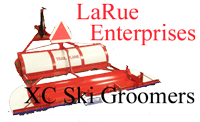On shooting well
January 2001
I believe that good shooting in biathlon comes from the proper application of the fundamentals of shooting. The fundamentals need not only be learned but understood through repetition.
The fundamentals of rifle marksmanship are: natural point of aim, sight alignment, sight picture, trigger squeeze, breath control and lastly follow through. Every one of these is important and it is good to take some workouts to work on one or two at a time. How do you do this? Well some workouts you can shoot 20 rounds on a blank piece of paper concentrating solely on trigger squeeze and sight alignment. This is an excellent drill for both prone and standing and it can be quite surprising on how good of a group one can shoot. Other drills include shooting without a front aperture or shooting without a prone sling. I will make a list in the future of various drills for improving shooting.
Possibly the most important thing about shooting is to practice as perfectly as you can. It is not a good idea to show up to the range and just shoot rounds out of your rifle. Always arrive with a plan, and try to stick to it.
The three things that I like to work on are accuracy, cadence and speed. For all three of these I like to divide my workouts into 20 shot sets. For all of these I come up with good scores that I attempt to beat each time I go to shoot. For instance a score that I always try to beat in slow fire (on an international target) is 150 in offhand and 190 in prone. These targets have scoring rings going from 2 to 10 so a perfect score would be 200. When I shoot cadence I generally like to shoot perfectly but everyone needs to come up with their own standards. Speed drills should be done in such a way that the fundamentals are not sacrificed for speed. Everyone should come up with a range time that they are comfortable with and then push it a little bit making sure to not let the fundamentals get away.
I believe that even if you hit a target often it can be a bad shot. In a race accept it and be happy. In practice you should be able to recognize that you have taken a bad shot even when you hit the target. Strive to concentrate on each shot and apply the fundamentals each time.
This is just a brief overview of shooting. There are many books on slowfire shooting that one can pick up at almost any library. Much can be gained from studying shooting and understanding how the bullet is affected after it leaves the barrel and how and why wind affects a round as it does travels to the target.
Finally I will bring up the importance of dry firing. Dry firing should be about half of your shooting training. There really is no better way to improve range time and work on the fundamentals than by dry firing. If dry firing is done routinely shooting averages and range times will improve. It is important to remember the fundamentals and work on them at this time. It will make the workouts on the range go much smoother. Important safety tips for dry firing include: make sure that your magazines are empty and treat the rifle as if it is loaded when you are shooting it at the dots on the wall.
Remember that with shooting practice makes perfect so remain focused and don't waste rounds teaching yourself bad habits.
-Curt
1/11/2001



